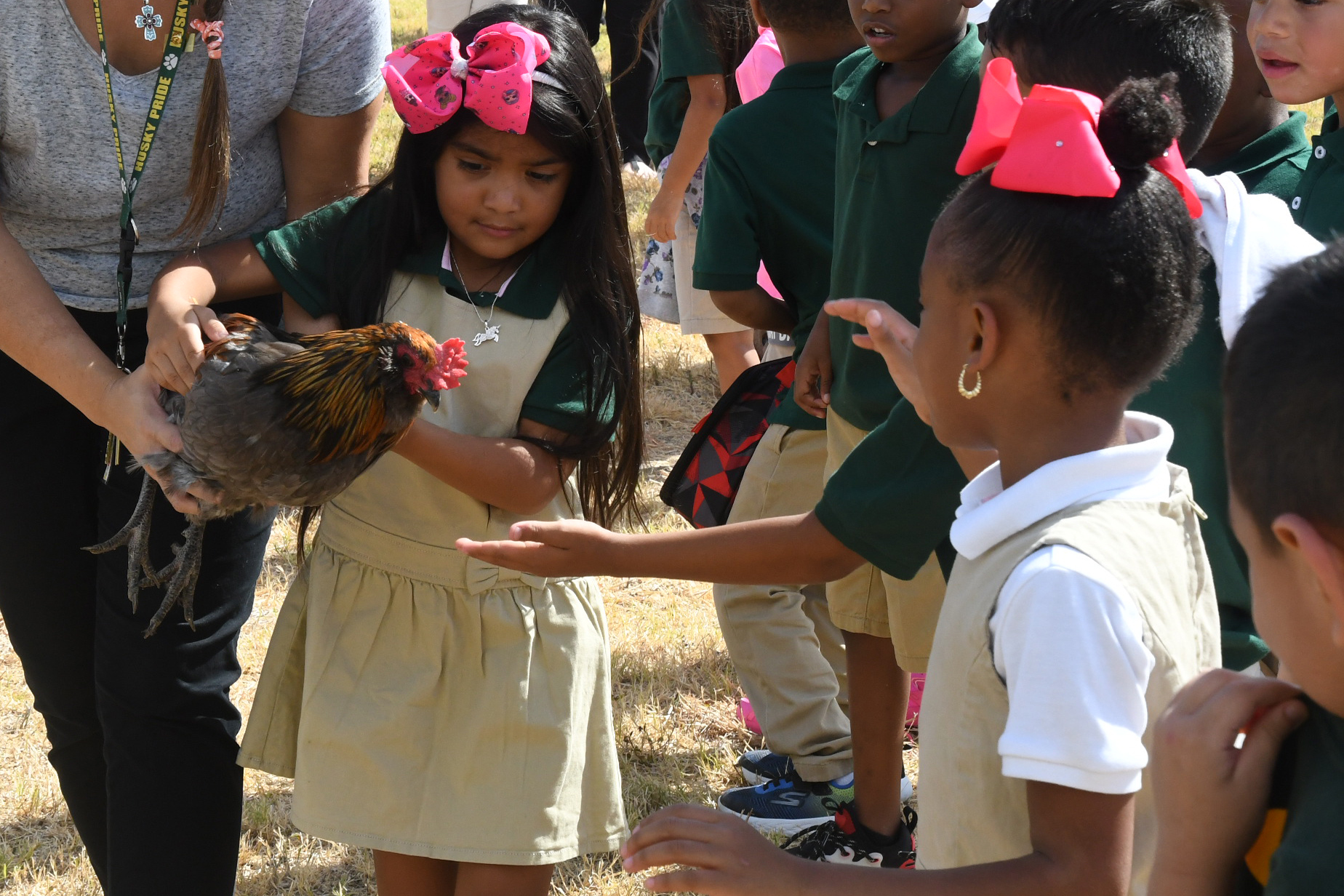
Seven campuses across SAISD have hatched a way to teach students science, social-emotional and character-development skills, with chickens.
This past spring, students at Hirsch Elementary School had a truly hands-on experience when 9 dozen chicken eggs were distributed to five classrooms at the school. Students took on the responsibility of incubating the eggs, from taking their temperature to religiously watching them turn in their incubators. Around 20 days later, the kids were delighted to meet their chicks as they pecked their way out of their shells.
And some of these chicks – now fully grown hens and roosters – have returned for the 2019-2020 school year to roost in the “Flying Huskies” Chicken Coop at Hirsch. The newly constructed hen home was built with a $2,000 grant from the Texas Department of Agriculture.
“There are many things that can be learned from raising chickens,” said Cheri Tondre, SAISD Gifted and Talented Education implementation specialist who was on hand to help welcome back the friendly fowl. “You can learn about the life cycle, needs of living things, ecosystems, human and environmental interactions, and food production. But there is also the lesson of compassion and caring for another living thing that brings out another side in our students.”
In addition to Hirsch, schools that also incubated eggs last school year include Lamar and Schenck elementary schools, M.L. King Academy, Advanced Learning Academy at both Euclid and Fox Tech, as well and Carroll Early Childhood Education.
Jeremiah Birmingham, a physical education teacher at ALA at Euclid who also teaches life sciences, has taken charge of the school’s chicken program, now in its second year. He helps students incubate eggs, maintains two chicken coops and runs the Chicken Club – a special group for students interested in helping with the birds in the mornings school before starts.
“When classes come out here, we talk about food, water, shelter space, and habitat – we do a lot of science just based on chickens,” said Birmingham. “Last week we were doing classification of vertebrates and invertebrates. We can use a chicken to show how all vertebrates have the same internal organs.”
In addition to being a great educational tool, Birmingham says having the chickens on campus has helped build relationships with community members volunteering to take the chickens out of their coops on the weekends.
“Now, through that interaction, we have people who want to start a neighborhood school watch program,” he said. “These chickens have led to a lot of community building.”
Of the eight chickens housed at ALA, four were hatched on campus and the others were provided by members of the Facebook group San Antonio Backyard Chickens (SABYC). Tondre came across the group, and started using it to keep up with the demand for eggs at local schools. The group now has almost 7,000 members.
Tondre has been integral in this “egg-ceptional” learning experience at SAISD – she began supplying eggs seven years ago at Graebner Elementary School when she was a teacher there.
“I keep a flock out in my hometown on my mom’s property so I could make sure kids see that there is a rainbow of egg colors,” Tondre said. “When we first started the program, we were only able to get brown eggs and that fed into the misconception of white eggs are from a store and brown eggs are from a farm. All eggs look the same on the inside, no matter what they look like on the outside and that is an important lesson in itself.”
While Tondre provides the eggs though SABYC, Region 20 Living Science material center provides the incubators and chicken life cycle materials for SAISD schools.
To learn more about living science in the classroom, click here. And for those interested in learning more about raising backyard chickens in San Antonio, click here.